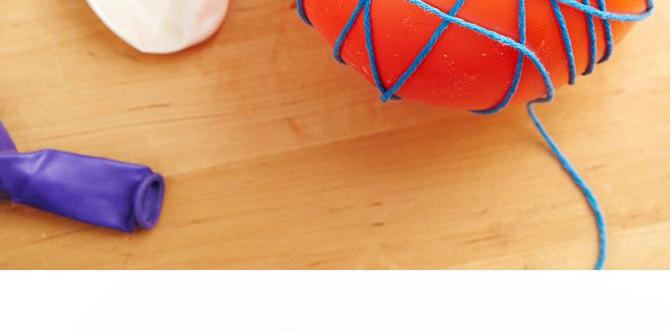Quick Summary: Safely handle and transport nail guns by always powering them down, removing the air hose or battery, securing the trigger, using a proper case, and practicing mindful movement. This prevents accidental firing and ensures your tool and workspace remain secure.
Hey DIYers and woodworkers! Jack Shaffer here, your go-to guy for all things nailing. Ever feel a little nervous hauling your trusty nail gun from your truck to the job site, or even just putting it away after a project? You’re not alone! These powerful tools are fantastic for speeding up our work, but they demand respect. Mishandling them, especially during transport, can lead to serious accidents. We’re talking about accidental nail discharges that can cause injury to yourself or others, or damage your valuable tools. But don’t sweat it! In this guide, I’ll walk you through simple, reliable steps to handle and transport your nail gun safely, so you can focus on your amazing projects with complete peace of mind. Let’s get those nails driven, not accidentally fired!
Table of Contents
Why Safe Handling and Transport Matters
Nail guns are incredible tools that can transform how you approach woodworking and construction projects. They drive fasteners with speed and precision, saving you tons of time and effort. However, their power also means they require careful attention. Accidental nail discharges can happen if a nail gun isn’t properly secured during transport. Imagine a tool bumping, a trigger getting squeezed by accident, or a nail being propelled unexpectedly. Ouch! This is why understanding how to handle and transport your nail gun safely isn’t just a good idea – it’s absolutely essential for preventing injuries and protecting your equipment.
Think of it like this: you wouldn’t leave a sharp saw blade exposed or toss a power drill around without a second thought, right? Your nail gun deserves the same level of consideration. By implementing a few key safety practices, you can drastically reduce the risk of accidents and ensure that your nail gun remains a helpful tool, not a hazard.
This guide will cover everything from de-powering your tool to choosing the right storage solutions. We’ll make sure you feel confident and prepared for every step of the process. Ready to nail your safety game?
Understanding Your Nail Gun’s Power Source
Before we even think about moving your nail gun, it’s crucial to understand how it gets its power. This directly impacts how you safely deactivate it for transport. Generally, nail guns fall into a few main categories based on their power source:
- Pneumatic (Air-Powered) Nail Guns: These are the classic workhorses. They rely on compressed air supplied by an air compressor through a hose.
- Electric Nail Guns: These use a standard electrical cord plugged into an outlet.
- Cordless (Battery-Powered) Nail Guns: These are battery-operated, offering great portability.
- Gas-Powered Nail Guns: These use a fuel cell (often a mix of gasoline and oil) and a battery for ignition.
Each type has its own specific deactivation steps. Taking the time to know yours will be the first step in safe handling. For instance, a pneumatic nailer needs its air source disconnected, while a cordless one needs its battery removed. It’s a simple distinction, but a critical one.
Pneumatic Nail Guns: Disconnecting the Air
For pneumatic nail guns, the air hose is your primary concern. This hose is under pressure when the compressor is running, and that pressure can still exist even if the compressor is off, especially if it’s still connected.
- Turn off the Air Compressor: Always shut down your air compressor first.
- Bleed the Line: Some recommend briefly firing the nail gun (aimed safely, of course) to relieve any residual air pressure in the hose and nailer.
- Disconnect the Hose: Once pressure has been released, uncouple the air hose from the compressor and the nail gun. Ensure the coupler locks disengage smoothly.
Never attempt to disconnect a pressurized air hose. It’s a common cause of injury, as couplers can snap back unexpectedly or pressurized air can blast out. Patience here pays off big time in safety.
Electric Nail Guns: Powering Down Safely
Electric nail guns are straightforward. They function much like a standard power tool.
- Unplug the Cord: The most critical step is to unplug the power cord from the electrical outlet.
- Secure the Cord: Wrap the cord neatly around the tool or use a cord management strap.
It sounds simple, but sometimes in the rush of finishing a project, people forget this basic step. Always double-check that the plug is no longer connected to power before you move it.
Cordless Nail Guns: Removing the Battery
Cordless nail guns offer freedom, but their battery is the power source you need to manage.
- Locate the Battery Latch: Most cordless tools have a release button or latch for the battery pack.
- Remove the Battery: Press the latch and slide the battery out of its housing.
- Store Separately (Optional but Recommended): For maximum safety, especially during longer transport, consider storing the battery separately from the tool.
This prevents any chance of the tool accidentally powering on if there’s a short circuit or a button is inadvertently pressed.
Gas-Powered Nail Guns: Handling Fuel and Batteries
Gas-powered nail guns require a bit more attention due to their fuel source and battery.
- Remove the Fuel Cell: Follow the manufacturer’s instructions for safely removing the fuel cell. It’s important to do this in a well-ventilated area.
- Remove the Battery: Similar to cordless electric models, remove the small battery that powers the ignition.
- Secure Loose Parts: Ensure the fuel cell cap is tightly closed.
Transporting tools with fuel cells can have specific regulations, especially for air travel, so always check local guidelines if you’re moving these across significant distances or through public transport hubs.
The Golden Rules of Nail Gun Handling
Regardless of your nail gun’s power source, there are universal safety rules you should always follow before and during its transport. These are non-negotiable for preventing accidents.
- Always Ensure it’s Depowered: This is the absolute first step. Disconnect the air, unplug the cord, or remove the battery. No exceptions.
- Keep Fingers Away from the Trigger: Your fingers should never be near the trigger when handling or carrying the nail gun.
- Point Away from Yourself and Others: Even when depowered, it’s good practice to maintain a habit of pointing the muzzle in a safe direction.
- Engage Safety Mechanisms: Many nail guns have a safety lock or trigger lockout mechanism. Use it!
- Use a Proper Case or Bag: Never just toss your nail gun around. A dedicated case protects it and prevents accidental bumps.
These rules are designed to be simple yet highly effective. Think of them as your personal safety checklist every single time you pick up your nail gun for transport.
Step-by-Step Guide: How to Safely Prepare Your Nail Gun for Transport
Let’s break down the process into clear, actionable steps. This applies to most nail guns, with minor variations depending on the power source.
Step 1: Complete Your Work Safely
Before you even think about packing up, ensure your immediate work area is safe. Finish driving your last nail, and if you’re on a ladder or unstable surface, get down to solid ground first. Make sure any finishing operations are done.
Step 2: Power Down Your Nail Gun
This is the critical deactivation step we discussed. Choose the method that matches your nail gun’s power source:
- Pneumatic: Turn off compressor, bleed line, disconnect hose.
- Electric: Unplug cord from the wall outlet.
- Cordless: Remove the battery pack.
- Gas: Remove fuel cell and battery.
Step 3: Engage Safety Trigger Lock (If Available)
Many modern nail guns come with a trigger safety lock. This is usually a small lever or button that prevents the trigger from being pulled. Engage this once the tool is depowered. Consult your owner’s manual if you’re unsure where it is or how to use it.
Step 4: Visually Inspect the Nail Gun
Take a moment to look over your nail gun. Ensure there are no nails still lodged in the feed or the nose. Check for any visible damage. This is also a good time to give it a quick clean if needed.
Step 5: Secure Moving Parts
For some nail guns, there might be a magazine latch or a nose cover that can be secured. Ensure any parts that could come loose or flap around are in a fixed, safe position.
Step 6: Place into a Protective Case or Bag
The best way to transport a nail gun is in its original case or a suitable tool bag. These are designed to protect the tool, keep it organized, and prevent accidental impacts that could lead to damage or accidental firing. If you don’t have the original case, look for a heavy-duty tool bag that fits snugly.
What to look for in a good nail gun case:
- Padded Interior: Protects against bumps and vibrations.
- Sturdy Exterior: Should be made of durable plastic or heavy-duty fabric.
- Secure Latches/Zippers: Keeps the case firmly shut.
- Compartments (Optional): Useful for storing accessories like nails, chargers, or air fittings.
Step 7: Carry with Care
When carrying the case, use the handle provided. Avoid swinging the case or dropping it. If carrying multiple tools, ensure they are balanced and secure. If the tool is bulky, consider using a wheeled cart or dolly. Never carry the nail gun by its hose or cord.
Transporting Your Nail Gun: From Job Site to Storage
Getting your nail gun from point A to point B requires the same level of caution as handling it. Whether it’s across the garage or across town, proper transport is key.
Transporting in Your Vehicle
This is where most DIYers will be transporting their nail guns. Here’s how to do it right:
- Secure the Case: Place the nail gun case in your vehicle where it won’t slide around. Use a seatbelt, cargo straps, or wedge it securely between other items. A sliding tool can tip over and potentially trigger an accidental discharge, even if just the safety is engaged.
- Keep it Upright (If Possible): Many tools are designed to be stored and transported in an upright position. Check your manual for specific recommendations.
- Separate Fuel/Batteries (for Gas Models): If transporting a gas-powered nail gun some distance, and if the manufacturer allows it, consider transporting the fuel cell and battery separately for maximum safety. Ensure the fuel cell is sealed and upright.
- Ventilation: If transporting a gas-powered nail gun, ensure your vehicle is well-ventilated, especially if there’s any lingering fuel smell.
Table: Vehicle Transport Checklist
| Item | Action | Safety Reason |
|---|---|---|
| Nail Gun Case | Secure in vehicle (seatbelt, straps, wedge) | Prevents shifting, tipping, reducing accidental firing risk. |
| Fuel Cell (Gas Models) | Ensure tightly sealed, upright, possibly separate from tool. | Prevents leaks and fuel exposure. |
| Battery Pack (Cordless/Gas) | Store securely, possibly separate. | Prevents accidental power-on if tool is jostled. |
| Air Hose (Pneumatic) | Coiled neatly, organized, no kinks. | Prevents damage to hose, avoids tripping hazard. |
Transporting Around the Job Site
If you’re moving between rooms, floors, or different areas of a large construction site, the principles remain the same.
- Use a Tool Belt or Cart: For short distances, a sturdy tool belt can work, but for heavier nailers, a dedicated tool cart is more practical and safer.
- Clear Your Path: Before you move, ensure your path is clear of debris, cords, and other trip hazards.
- If Carrying: If you must carry the nail gun (in its case!), use the handle and carry it close to your body for balance. Avoid carrying it by the barrel or where the trigger is exposed.
Remember, even a few steps can be hazardous if the tool isn’t handled properly.
Storing Your Nail Gun After Transport
Once you’re done with transport and ready to put your nail gun away, follow these storage tips:
- Store in its Case: Always put it back in its protective case or designated storage spot.
- Dry Environment: Store in a dry place to prevent rust and corrosion, especially for pneumatic and electric tools.
- Out of Reach of Children: If children are present, store all power tools in a locked cabinet or a secure high location.
- Avoid Extreme Temperatures Extreme heat or cold can damage batteries and other components.
Essential Accessories for Safe Nail Gun Transport
While the nail gun itself is the main focus, a few accessories can make transport significantly safer and easier.
- Heavy-Duty Tool Bag or Case: As mentioned, this is paramount. Invest in one that fits your specific nail gun model well. Brands like DeWalt, Milwaukee, and Makita often offer robust cases for their tool lines.
- Tool Straps/Bungee Cords: Useful for securing the case within your vehicle or for bundling air hoses and power cords neatly.
- Tool Cart or Dolly: For larger compressors and tools, a cart can save your back and prevent drops.
- Safety Glasses and Hearing Protection: While not for transport itself, always have these ready and nearby for when you use the nail gun. It’s good practice to keep them with your tool kit.
Having these items ready means you’re always prepared to pack up and move safely. You can find good quality tool bags and accessories at most major hardware retailers or online!
Common Pitfalls to Avoid
Even with the best intentions, it’s easy to slip up. Here are some common mistakes people make when handling and transporting nail guns, and how to avoid them:
Table: Common Pitfalls and How to Avoid Them
| Pitfall | How to Avoid |
|---|---|
| Forgetting to Depower | Make powering down the absolute first step after finishing work. Make it a habit. |
| Leaving Fingers on Trigger | Consciously practice keeping fingers away from the trigger during handling and transport. |
| Carrying by Hose/Cord | Always use the designated handle or carry the tool in its case. |
| Not Using a Carrying Case | Invest in or use a suitable case; it protects the tool and prevents accidental discharges. |
| Rough Handling/Dropping | Be mindful of your movements. If it’s heavy, get help or use a cart. |
| Leaving Tools Unsecured in Vehicle | Always strap down or wedge cases to prevent movement. |
| Transporting with Fuel/Battery Connected (Gas models) | Consult your manual; often recommended to disconnect these for maximum safety. |
Avoiding these common errors will significantly boost your safety record when working with nail guns.
The Importance of Owner’s Manuals
I can’t stress this enough: your nail gun’s owner’s manual is your best friend. It contains specific instructions tailored to your exact model. For example, how to engage the safety lock, how to remove the battery or fuel cell, and recommended transport and storage positions.
If you’ve lost yours, a quick search online for your nail gun’s brand and model number on the manufacturer’s website will usually yield a downloadable PDF. Taking just a few minutes to review it can prevent a lifetime of regret. You can find great resources on tool safety from organizations like the Occupational Safety and Health Administration (OSHA) at osha.gov.
Frequently Asked Questions (FAQ)
Q1: Do I need to remove the battery from my cordless nail gun every time I transport it?
It’


